Wireless charging is commonly known for the deletion of a cable that has conventionally been needed for charging various appliances like mobile phones, etc. With wireless charging technology, however, battery-powered devices can be juiced up by setting them on a special pad or station that transmits power wirelessly. This results in making the appliance case strong, even water-resistant. This wireless charging not only offers convenience but also safety. How many times have you worried about wearing and tearing your chargers down? The wireless charger can offer reliability in its way. The main principle used for wireless charging is Faraday’s law of induced voltage (commonly used in motors and transmitters).
Why do you need Wireless Charging?
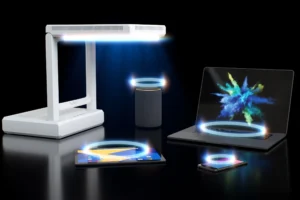
Some companies providing wireless charging are:
WiTricity: Button
Wireless charging technology is not just limited to charging smartphones as it emerged in the market. This innovation is slowly being incorporated into various sectors where it acts as a convenient and wireless method of charging devices. Let’s explore some exciting areas where wireless charging is making a significant impact:
1. Simplifying Everyday Devices:
Smart Homes: To anybody who has ever wished that smart home devices such as smart speakers, smart thermostats, and smart vacuums could run all day and night, you are not alone. This technology would also be capable of charging these devices wirelessly, thereby negating the need to constantly replace batteries or look for charging cords.
Wearables: Wireless charging is particularly suitable for the limited size of fitness trackers, smartwatches, as well as other wearable devices. These compact devices can be easily placed on charging pads so they are always charged to assess your health and physical activities.
Kitchen Appliances: This won’t come as a surprise to anyone familiar with wireless charging as this technology is capable of revolutionizing any room in the house including the kitchen. Suppose your countertop blender or electric mixer was able to charge while resting on the countertop- no messy wires or outlets here.
2. Enhancing Industrial Efficiency:
Manufacturing and Automation: It is also used to charge robots or other automated machinery in factories; this can avoid the problem of dropping cables and constant wear & tear. It can help enhance safety and increase productivity in production lines.
Medical Devices: Wireless charging can be very useful for medical devices such as pacemakers, hearing aids, and others. It eradicates the necessity of the complex technique that requires battery replacement, which contributes to the patient’s comfort and safety.
Power Tools: Wireless charging can revolutionize the construction crews and the do-it-yourself individuals. Ponder for a moment cordless power tools that are designed to recharge once you put them back into their tool boxes means no more moving around looking for the chargers.
3. The Future of Electric Vehicles:
As it has been discovered, wireless charging is an exciting prospect for electric vehicles or EVs. Specifically, picture being able to park your electric car into the garage and the charging process begins even without plugging it in. This convenience could go a long way in increasing the sales of EVs as the perception of the range limit for the electric vehicle would not be an issue as it is with the hybrid cars.
4. Public Spaces and On-the-Go Convenience:
Wireless charging solutions can be easily and naturally applied to public environments such as airports, cafes, and furniture in lobby zones. It enables users to charge their products without having to lug around cables for their gadgets. Picture a world where your car focuses on charging your phone, and there is no need to worry about finding a place to charge it en route.
How does Wireless Charging work?
-
The Energizer: Features of the Charging Pad or the Transmitter Coil
This is a flat pad that is normally made from plastic and this contains the transmitter coil. This coil working in coordination with the battery of the device helps to change the direct current from the outlet to an alternating magnetic current. The transmitter coil looks like a very small electromagnet that produces a magnetic field into which charges are transmitted.
-
The Receiver: The Device’s Receiving Coil
They kept their receiver’s coil integrated into your smartphone, smartwatch, or any other compatible device. This coil forms part of the device and is intended to attract the electromagnetic field created by the transmitter coil. When the device is positioned on the pad, the receiver coil changes the magnetic field into an AC source as a form of charging the internal battery of the device.
-
The Bridge: The Resonance Circuit
In addition both coils have resonance circuits in the transmitter and the receiver ends. These circuits could best be described as a series of resonant circuits. They are designed to oscillate at that certain frequency. In the case of the receiver coil, when the frequency of the transmitter coil is the same as the receiver coil, then maximum energy transfer takes place hence maximum charging.
-
The Controller: The FOD System (“Foreign Object Detection”)
Safety is paramount. The wireless charging system means it encompasses a Foreign Object Detection (FOD) system. This system employs the use of sensors and circuits to identify any metallic objects placed on the charging pad except for the particular device. If there is something other than the paper inside the scanner, the flow of electricity is cut off to avert a short-circuit or other related complications.
-
The Power Source: The Adapter or Wall Outlet
Although wireless charging does not emit energy from a datanet like Star Trek’s ‘phaser,’ it is not simply conjuring energy from thin air! The system must be powered in some way, most commonly through an AC outlet or a cable that connects the outlet to the system. This source gives the AC electricity that is used by the transmitter coil to generate a magnetic field to charge your device.
These five components are as follows which collectively make a splendid come-up for wireless charging. With the progression of technology over the next few years, these components can only be made more efficient and compact, making cable management a thing of the past.
Invisible Power, Real Challenges: Primary design considerations for Wireless charging:
Despite the numerous benefits of wireless charging wired charging presents several main factors that need to be considered to deliver maximum efficiency and safety. Here are five primary concerns that engineers tackle when developing wireless charging systems:
Efficiency and Power Transfer: Wireless charging to some extent has energy conversion from current to magnetic field and vice versa there is always energy wastage. One of the primary problems is to make the design as efficient as possible in terms of energy loss and time required for the charging. This includes proper design and orientation of both the transmit and receive coils, and proper placement of the device with the charging pad.
Heat Management: The process of changing the electrical current into a magnetic field and then converting it back to the electrical current generates heat. One of the concerns that can be attributed to inefficient systems is the formation of heat pockets in the charging pad as well as on the device. Designers are to ensure that energy flows properly, include heat sinks in the product, and maybe even slow down the flow of current to avoid overheating and damaging other devices.
Foreign Object Detection (FOD): Above all, safety is an essential condition when choosing a platform for fashion. Wireless charging systems must show the capability of identifying any metallic objects (coins, keys) placed on the surface of the charging pad except the charging device. These objects can distort a magnetic field, contribute to the formation of hot areas, or even generate sparks. FOD systems detect the presence of a foreign object on the circuit and use sensors and circuitry to stop the transmission of power if needed.
Interference and Interoperability: When several wireless charging devices are placed close to each other, they disrupt one another’s magnetic fields and, as a result, cause low charging rates. Since there are several groups of wireless charging systems and many manufacturers involved, it is important to have a single operating frequency and protocol for all of them.
Charging Distance and Spatial Freedom: A significant number of currently available wireless charging systems are limited in range and necessitate the device to be placed directly on the pad. It remains a challenge for the designers to push the charging distance to the limit and consider features such as spatial charging, with a single transmitter pad that charges all the devices in the defined zone. This would be much more convenient for users and would provide more options for them than the current solution.
Cut the Cord: The Advantages of Wireless Charging: An Exposé
Smart charging avoids the problem of dealing with wires and cables to get the energy these devices need to work. Indeed, it does not end with convenience alone that is experienced with this system. Let’s explore five key advantages that make wireless charging a compelling technology:
Convenience Unbound: Time to Unplug
Look no further than charging cables that come with no tangles or misplaced ports for good measure. One of the main advantages of wireless charging is that a device can be placed on a charging mat and left unattended. It’s not the tradition anymore to crawl under furniture or look for a cord in the drawers. Simplicity takes one of the biggest hassles of people’s lives and reduces the charging process.
Enhanced Durability: Lowered Wearing Out or Depletion
Cabled charging entails constant connectivity and disconnecting of cables that in the long run cause wear and tear on the charging ports of specific devices. This may cause the connections to become loose, charging problems, and in the worst case, expensive repair work. This comes in handy as it reduces the amount of times devices get to be plugged in and out thus saving the port on your device from excessive tear.
Improved Aesthetics: A Neater and Tidier Picture
Wireless charging is a more environmentally friendly solution while the appearance of a workplace or home can also be pleasing with fewer wires on the floor. Removing the cables makes for a cleaner-looking product, with fewer wires hanging around detracting from the overall aesthetic. Charging pads can be hidden in the furniture or they can blend with the furniture where it has been placed.
Water Resistance Peace of Mind:
Some devices like the smartphone use water-resistant covers. Of course, water penetration to the charging port will require repair of the device if damaged. Wireless charging also does away with the issues involving the port being in contact with liquids and this is especially so in areas that are likely to experience spillages such as the kitchen and the bathroom.
Multi-Device Charging Potential:
Some envision constant charging without wires as the next big thing in wireless charging technology. Just think about those smart charging pads that can simultaneously charge several devices at once. This could be a new invention for many families having many electronic devices to charge, instead of using different chargers and having many cords in a single place. This multi-device convenience is made possible by advancements in spatial charging technology.

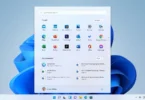
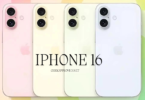


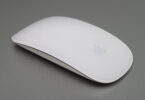
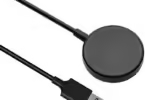
This is a test comment
Testbeitrag äü